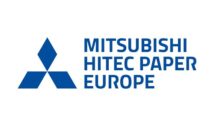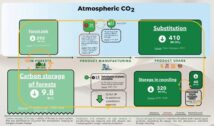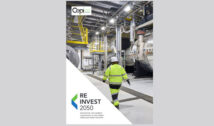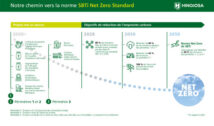
It is now scientifically proven that reuse should be considered on a case–by–case basis as it is not always the best environmental option. A peer–reviewed study shows that reusable packaging has a stronger impact on climate than recyclable corrugated.
EU policies place a strong emphasis on the role of packaging in the circular economy and its design to be recycled and/or reused. Packaging exists for a reason; therefore, it is vital to consider packaging functionality, sustainability, and overall performance from a life–cycle perspective.
The three studies released by FEFCO were conducted by an independent consultancy (Ramboll) and a research institute (VTT). The studies evaluate the impact of recyclable corrugated board packaging compared to reusable plastic packaging and revealed a series of important conclusions. These are available here on the dedicated FEFCO webpage.
The peer–reviewed comparative life–cycle assessment compares the environmental impact of corrugated cardboard boxes and plastic crates when transporting produce over average distances in Europe.
Key findings, extracted by FEFCO, show that:
• The corrugated board system is more beneficial in 10 out of 15 impact categories, including climate change, total resource use including fossils, mineral and metals.
• The break–even analysis shows that plastic crates would need to reach a minimum of 63 rotations to outperform corrugated boxes in the climate change impact category. According to the Life Cycle Analysis (LCA), the average reuse rate of plastic reusable crates is 24 rotations which is below the break–even.
The hot spot analysis of the e–commerce logistic chain evaluates recyclable corrugated versus reusable plastic solutions. The study identified 51 hot spots, or stages in the life cycle, which account for a significant proportion of the environmental impact of the packaging within the supply chain.
The top 3 hot spots, summarised by FEFCO are:
• Real number of uses for multiple use solutions is the most important parameter, as official EU data does not exist, and available data is not always transparent.
• Logistics parameters (e.g. storage, transport distances, loading capacity, sorting) are ranked second, indicating the transport distances have a major impact notably on emissions and will continue to influence the life cycle of the product.
• Percentage of recycled material used in production is another key point as the data for recycled content of reusable packaging is limited. On the contrary, it is well–established that corrugated cardboard packaging contains on average 89% recycled content.
The white paper, prepared by research institute, VTT, provides a critical view on packaging recycling and reuse in the European Circular Economy. The study conclusions, summarised by FEFCO, are as follows:
• The concept of ‘fit for purpose’ packaging should be central in the Commission’s proposal of the Packaging and Packaging Waste Directive (PPWD) as it contributes to achieving circularity and climate neutrality while reducing waste.
• Both recyclable corrugated and reusable packaging solutions could provide appropriate solutions depending on the packaging requirements and should be considered by the European Commission when proposing legislation.
•The waste hierarchy should be improved based on life cycle thinking, as reusable packaging is not always the most sustainable solution.
• Environmental impacts may simply shift, not disappear, as a result of scaling up reuse systems.
• There is no obvious best choice when selecting between recyclable and reusable packaging solutions as results vary significantly on a case–by–case basis. This demonstrates a clear need to avoid one–size–fits–all policy and rather focus on fit–for–purpose solutions.
• The shift to reusable systems involves substantial initial economic investments thus creating new costs related to washing, repair etc. while burdening the environment, with no guarantee of success.
Eleni Despotou, Director General of FEFCO, said “Based on evidence, it is critical to consider that expressing a clear preference for reusable versus recyclable packaging is a narrow–minded approach. Legislative proposals must ensure that any packaging placed on the EU market is ‘fit for purpose,’ environmentally friendly, fulfils its functionality and prevents unnecessary waste which is the ultimate objective of policymakers.”
A well–functioning circular economy requires efficient and environmentally friendly circulation of materials where both reuse and recycled packaging have their role to play.
However, a robust understanding of their impacts is needed. Therefore, policies must encourage sustainable packaging solutions that truly contribute to waste prevention. Using a blend of properly deployed lifecycle assessments will prevent unintended consequences for our environment and climate while allowing business to innovate and meet their commitments.

































